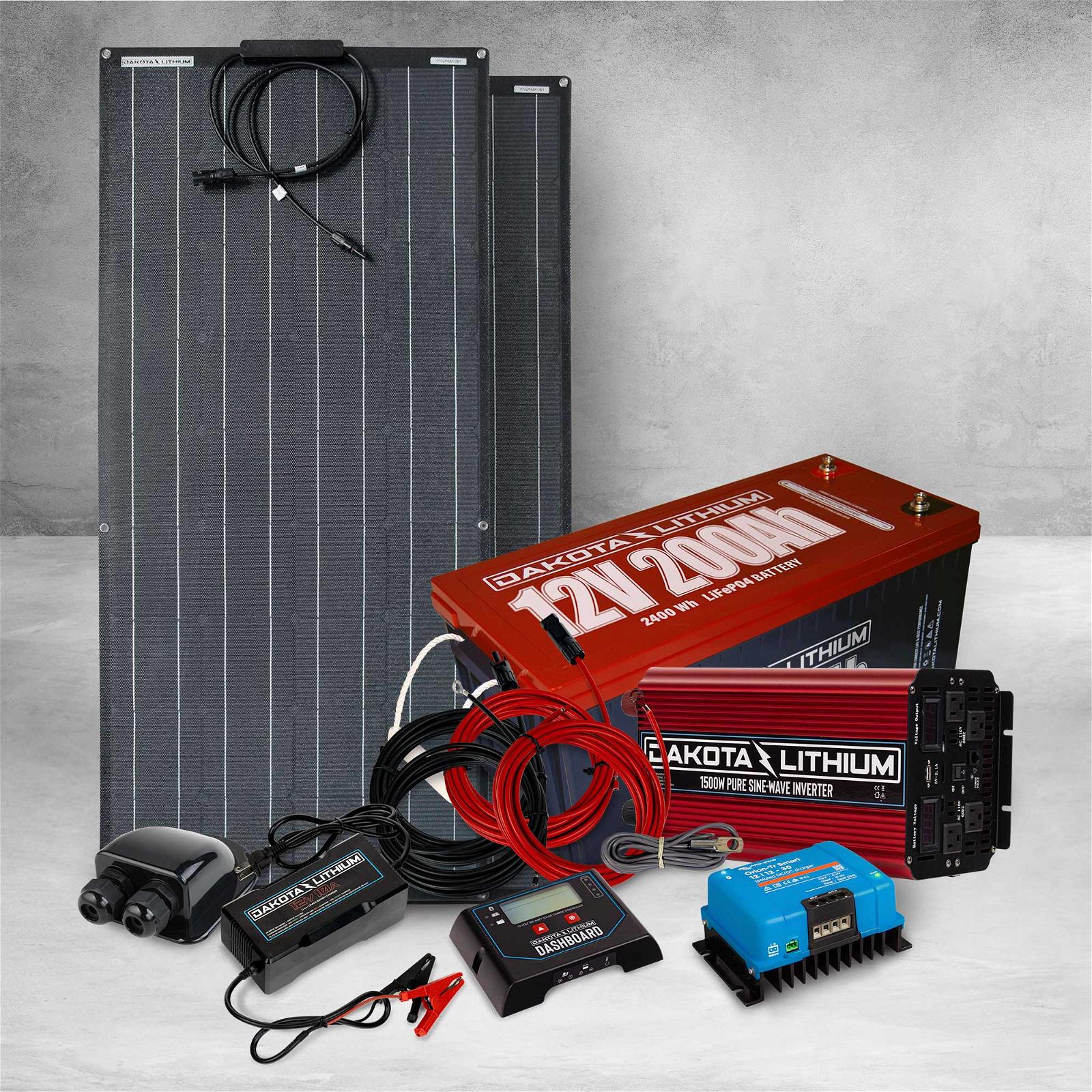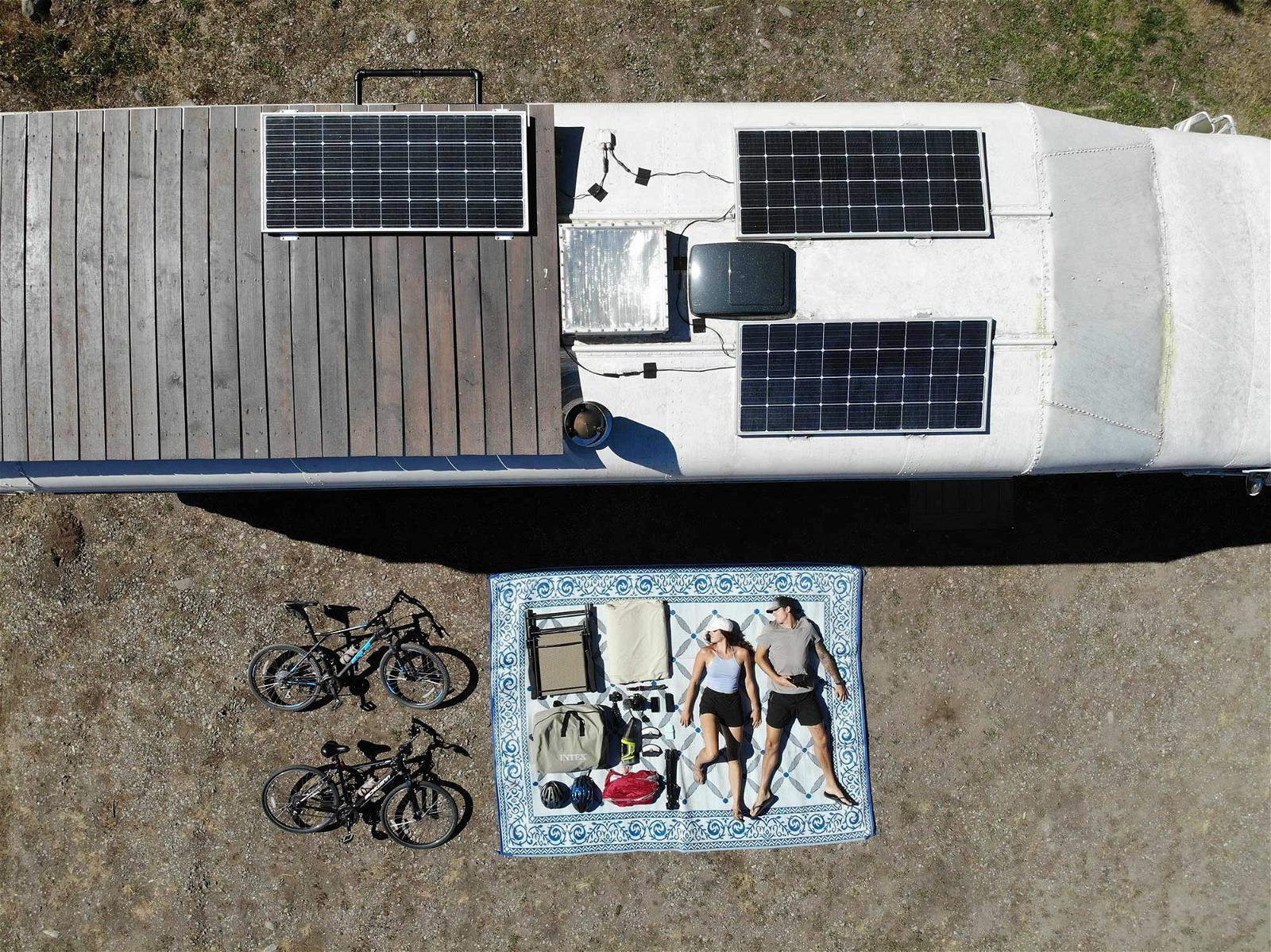What is the best battery for Solar Panels?
August 12, 2019 | Andrew Jay
To determine the best battery for your solar panels look for a high round trip efficiency (RTE), and a long cycle life (lifespan), and a flat voltage curve (usable energy). A more efficient battery with a flat voltage curve will allow you to use more of the solar energy generated by your solar panels. A long cycle life will provide the lowest cost per recharge cycle (pro tip: look for a warranty that matches the advertised cycle life – for example, Dakota Lithium provides an 11 year warranty on all batteries).

What is the most efficient battery for solar panels?
Lithium Iron Phosphate batteries provide the highest Round Trip Efficiency (RTE) for solar / solar grid energy conversion. Lithium Iron Phosphate, knows as LiFePO4 for short, provides a 96% round trip charge cycle. That means 96% of the energy stored in a Dakota Lithium battery is recovered in a full discharge cycle, making it one of the highest efficiency batteries on the planet. A higher efficiency means more of the energy that has been generated by your solar panels can be used each day. In addition, unlike lead acid batteries, the voltage curve for a Dakota Lithium iron phosphate battery is flat. That means that all 96% of the energy you are using is at the same steady voltage, providing you with sustained performance.
Here are some data points on different battery chemistry and the differences of RTE – Round Trip Efficiency
Rank of Best to Worst Solar Batteries by RTE Unit of Measurement: %
- Lithium Iron Phosphate = 88%;
- Lithium Ion NMC = 82%;
- Lead Acid = 76%;
- Nickel Batteries = 74%;
- Vanadium Redox Flow = 69%.
These numbers are not for just the batteries themselves, but paired with a 95% RTE inverter, so numbers are lower (the Lithium Iron Phosphate battery would be even better with a higher efficiency inverter)
Here is outside testing on Lithium Iron Phosphate batteries RTE. This shows the RTE of a battery without the interference of an inverter.
“Another benefit to the customer is the far greater round trip efficiency of the LiFePO4 cell, which is typically better than 96%. A “round trip” is a complete charge and discharge cycle.”
– EE Publishers, LiFePO4 cells: the next generation of energy storage
How Long Will My Battery Hold a Charge?
A Dakota Lithium Iron Phosphate (LiFePO4) battery has a typical self discharge rate of 5% per month. In other words, it takes six months for a LiFePO4 battery to self discharge to the same level a conventional battery reaches in just thirty days. That means your battery will hold solar energy for longer until you are ready to use it. It also makes it an optimal battery for emergencies, or back up power for when the lights go out.
What is the most cost effective battery for solar panels?
Dakota Lithium Iron Phosphate batteries provide the greatest lifetime value for solar energy storage. While also providing superior performance in the present. Lead acid batteries have the lowest up front investment, but with short lifespan you will need to replace a lead acid battery 4-5 times over the lifespan on one Dakota Lithium battery. Here’s the performance difference:
- Dakota Lithium has twice the usable power per charge. Since the voltage curve does not drop drastically like lead acid you are able to access 96% of the energy that your panels produced.
- Dakota Lithium lasts 2,000 – 5,000 recharge cycles vs. 400-500 for a lead acid battery.
- Dakota Lithium is half the weight. This means you can have a battery bank in your home without the worry of it breaking or bending your floor.
- Dakota Lithium batteries are backed up by a best in class 11 year warranty. That means you enjoy guaranteed performance and lifespan.
